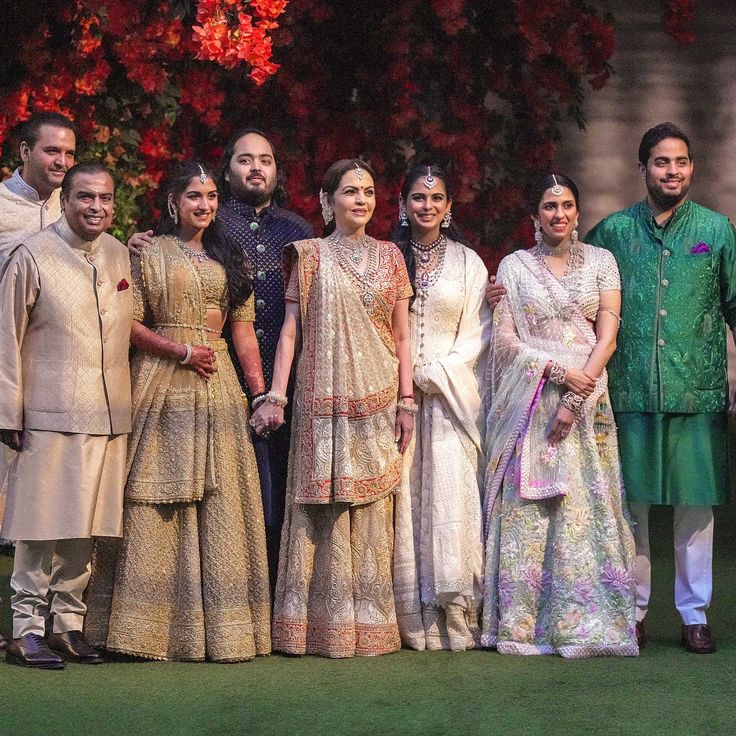Christmas Around the World
Joyful Christmas: A Myriad of Festive Delights Await You in 2023!
Christmas is a celebration of the birth of Jesus Christ, observed by billions of people around the world. It is a religious holiday for Christians, but it has also become a secular cultural celebration. Christmas is celebrated on December 25th in the Gregorian calendar.
History of Christmas
The exact origins of Christmas are unknown, but it is believed to have originated in the early Roman Empire. The Romans celebrated a pagan holiday called Saturnalia in honor of the god Saturn. Saturnalia was held from December 17th to December 23rd. The early Christians adopted this holiday and reinterpreted it as a celebration of the birth of Jesus Christ.
In the 4th century AD, the Emperor Constantine converted to Christianity and made Christmas a legal holiday. Christmas quickly became one of the most important holidays in the Christian calendar.
Christmas Traditions
There are many Christmas traditions that are celebrated around the world. Some of these traditions include:
- Decorating a Christmas tree
- Exchanging gifts
- Singing Christmas carols
- Attending church services
- Eating a special Christmas meal
Christmas Around the World
Christmas is celebrated in different ways around the world. In some countries, it is a religious holiday, while in others it is a secular celebration. Some of the most popular Christmas traditions around the world include:
- In the United States, Christmas is celebrated with turkey dinners, gift-giving, and tree decorating.
- In the United Kingdom, Christmas is celebrated with a traditional Christmas roast, plum pudding, and caroling.
- In Germany, Christmas is celebrated with Christmas markets, gingerbread cookies, and stollen.
- In France, Christmas is celebrated with a bûche de Noël, a type of Yule log cake.
- In Mexico, Christmas is celebrated with posadas, processions that reenact the journey of Mary and Joseph to Bethlehem.
Christmas is a time for family, friends, and giving. It is a time to celebrate the birth of Jesus Christ and spread love and joy.
Christmas In 2023
Christmas is a time for celebration, family, and friends. It is a time to give and receive gifts, and to spread joy and goodwill to all. In 2023, Christmas will be celebrated on Monday, December 25th.
what is christmas ?
Christmas is an annual festival celebrated in many cultures worldwide, commemorating the birth of Jesus Christ. It is a time of joy, togetherness, and festivities marked by the exchange of gifts, festive decorations, and special meals. Beyond its religious significance, Christmas has become a cultural and secular celebration, bringing people together to share love, warmth, and goodwill towards one another. Traditions include decorating Christmas trees, exchanging presents, and enjoying festive meals with family and friends. The holiday season typically spans from late December into early January, fostering a sense of community and spreading cheer across the globe.
How is Christmas celebrated around the world?
Christmas is celebrated around the world, but there are many different ways that people celebrate this special holiday. In some countries, Christmas is a religious holiday, while in others it is a more secular holiday. However, no matter how it is celebrated, Christmas is always a time for joy and happiness.
Some of the most common Christmas traditions include:
- Decorating a Christmas tree
- Exchanging gifts
- Attending church services
- Singing Christmas carols
- Eating a special Christmas meal
What are some of the most popular Christmas foods?
There are many different traditional Christmas foods, but some of the most popular include:
- Roasted turkey
- Ham
- Mashed potatoes
- Stuffing
- Cranberry sauce
- Pumpkin pie
- Eggnog
What are some of the most popular Christmas gifts?
The most popular Christmas gifts vary from year to year, but some of the most popular gifts in recent years have included:
- Toys
- Electronics
- Clothing
- Gift cards
- Experiences
What are some of the most popular Christmas movies?
There are many classic Christmas movies that are enjoyed by people of all ages. Some of the most popular Christmas movies include:
- Home Alone
- The Grinch
- It’s a Wonderful Life
- A Christmas Story
- Elf
How can you make Christmas in 2023 special?
There are many ways to make Christmas in 2023 special. Here are a few ideas:
- Spend time with loved ones
- Give to others
- Volunteer your time
- Make homemade gifts
- Start new traditions
- Enjoy the simple things
HISTORY OF CHRISTMAS

The history of Christmas is a rich tapestry woven from various cultural, religious, and historical threads. While the celebration of Christmas is now predominantly associated with the Christian tradition, its origins can be traced back to earlier pagan festivals and rituals.
- Winter Solstice Celebrations:
- Many cultures celebrated the winter solstice, the shortest day and longest night of the year, around December 21st or 22nd in the Northern Hemisphere. These celebrations marked the turning point when days began to lengthen, symbolizing the return of light and life.
- Roman Festival of Saturnalia:
- The Roman festival of Saturnalia, held in late December, honored the god Saturn. During this festival, social norms were temporarily overturned, and people engaged in feasting, gift-giving, and merrymaking.
- Nativity Celebrations:
- The Christian celebration of Christmas has its roots in the commemoration of the birth of Jesus Christ. While the exact date of Jesus’ birth is not specified in the Bible, December 25th was chosen by early Christians to coincide with existing pagan celebrations. This helped ease the transition of people into the Christian faith.
- Christianization of Pagan Festivals:
- As Christianity spread through Europe, missionaries often incorporated local customs and festivals into Christian celebrations. This syncretism helped facilitate the conversion of pagan populations.
- Medieval Christmas Celebrations:
- In medieval Europe, Christmas evolved into a more elaborate celebration. It became a time for feasting, music, and elaborate theatrical events. The Christmas tree tradition is said to have originated in Germany during this period.
- Puritan Opposition and Victorian Revival:
- In the 17th century, some Puritans and other religious groups opposed the celebration of Christmas due to its perceived pagan roots. However, by the 19th century, Christmas underwent a revival in the English-speaking world, particularly during the Victorian era. Queen Victoria and Prince Albert popularized the celebration of Christmas with their own family traditions, including the decorating of Christmas trees.
- Commercialization and Globalization:
- In the 20th century, Christmas became increasingly commercialized, with the rise of gift-giving, Santa Claus, and festive decorations. The celebration spread globally through cultural exchange and globalization, adapting to various local traditions and customs.
Today, Christmas is celebrated by billions of people around the world, both as a religious holiday and a cultural phenomenon. The customs and traditions associated with Christmas continue to evolve, reflecting the diverse cultural and historical influences that have shaped this festive season over the centuries.
The Religious Significance of Christmas: The Birth of Jesus Christ and the Nativity Story
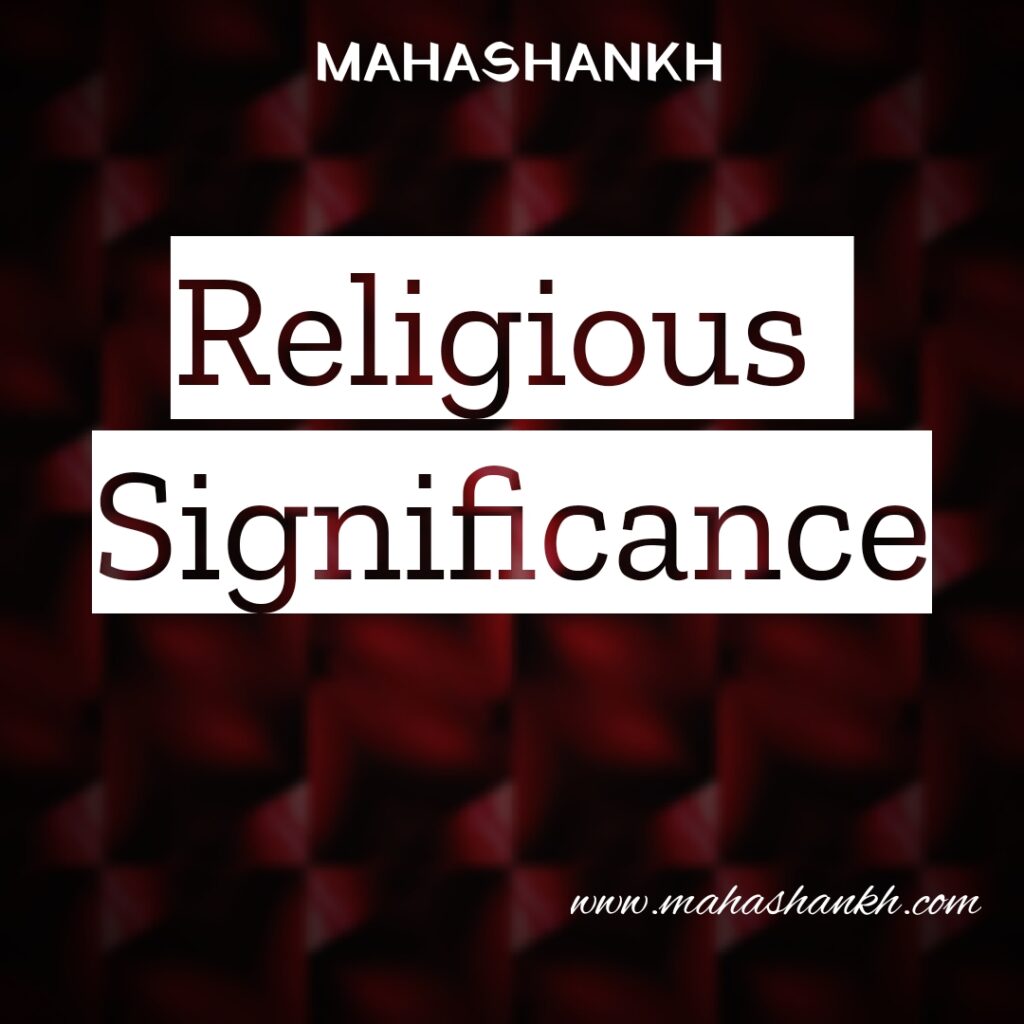
Christmas, celebrated globally with joy and festivities, holds profound religious significance for millions of Christians around the world. At the heart of Christmas lies the sacred narrative of the birth of Jesus Christ, an event that has shaped Christian theology and tradition for centuries. In this article, we delve into the religious significance of Christmas by exploring the birth of Jesus Christ and the Nativity Story.
The Birth of Jesus Christ:
The Christian faith teaches that Jesus Christ, the central figure of Christianity, was born in Bethlehem over two thousand years ago. The Gospels of Matthew and Luke in the New Testament of the Bible provide detailed accounts of the events surrounding his birth.
According to the Gospel of Matthew, Jesus was born during the reign of King Herod in Bethlehem, a small town in Judea. The story recounts the arrival of the Magi, or Wise Men, who followed a guiding star to find the newborn King of the Jews. Herod, threatened by this prophecy, sought to locate and harm the infant, leading to the Holy Family’s escape to Egypt for safety.
The Gospel of Luke offers another perspective, emphasizing the humble circumstances of Jesus’ birth. Mary, a young woman from Nazareth, and her husband Joseph traveled to Bethlehem for a census decreed by Caesar Augustus. Unable to find lodging in the crowded town, they sought refuge in a stable where Jesus was born and laid in a manger. The angelic announcement of the birth was made to shepherds in the fields, symbolizing the inclusivity of the message.
The Nativity Story:
The Nativity Story encompasses the broader narrative surrounding the birth of Jesus. It includes the angelic announcements to Mary and the shepherds, the journey to Bethlehem, and the significant roles played by various characters such as Joseph, the Magi, and the shepherds.
Central to the Nativity Story is the concept of the Incarnation, wherein Christians believe that God became human in the form of Jesus Christ. This miraculous event, celebrated at Christmas, underscores the divine nature of Jesus and his role as the Savior.
The Nativity Scene, a popular Christmas tradition, visually depicts the key elements of the story, often featuring figurines of Mary, Joseph, the baby Jesus, angels, shepherds, and the Wise Men. The scene serves as a powerful reminder of the humble yet profound circumstances surrounding the birth of the Messiah.
The religious significance of Christmas is deeply rooted in the birth of Jesus Christ and the Nativity Story as presented in the Gospels. For Christians, Christmas is a time of reflection, worship, and celebration of the miraculous incarnation of God in human form. The Nativity Story continues to inspire believers, fostering a sense of hope, joy, and spiritual renewal during the festive season. As millions gather to commemorate the birth of Jesus each year, the enduring message of love, peace, and salvation resonates across generations, making Christmas a sacred and cherished observance for Christians worldwide.
Cultural and Global Celebrations: Exploring Christmas Traditions Around the World
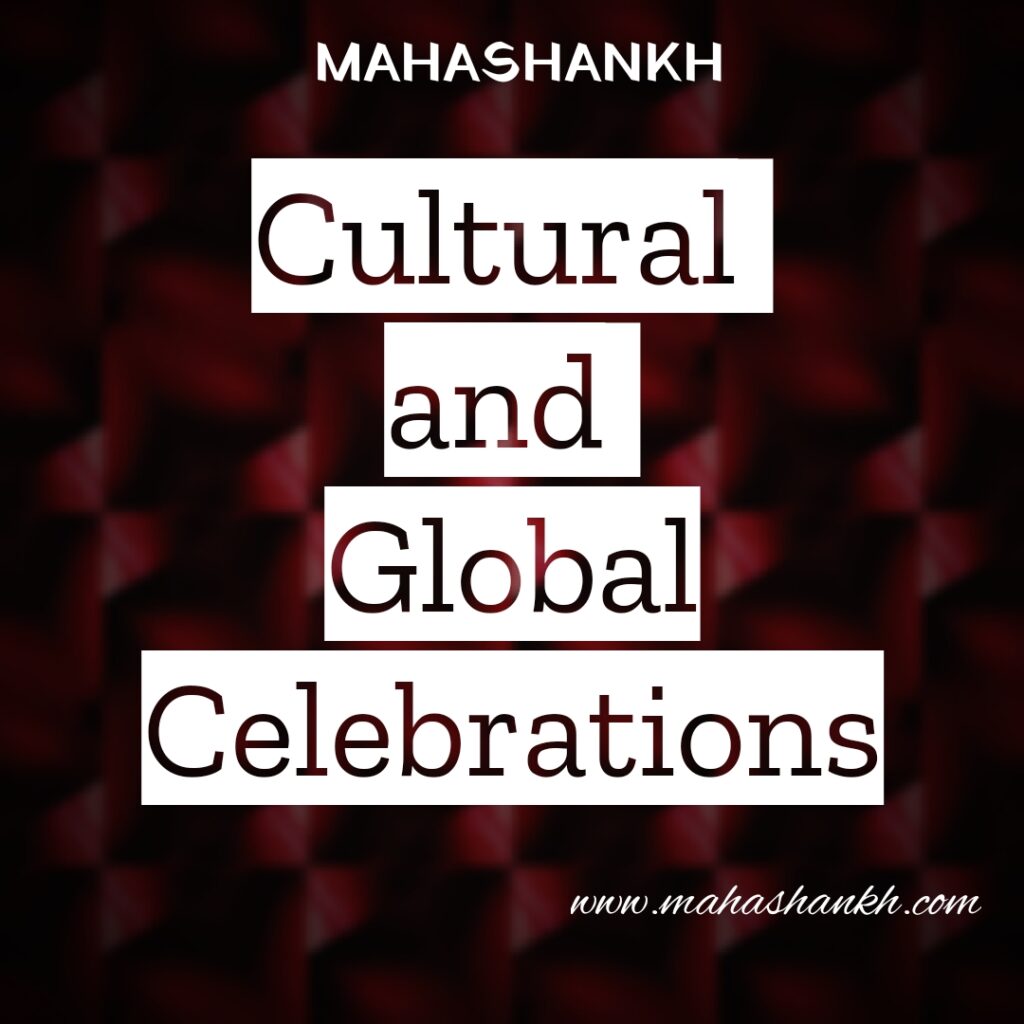
As the holiday season approaches, the world comes alive with the festive spirit of Christmas. While the core of Christmas is rooted in Christian traditions, the celebration has evolved and adapted to various cultures, giving rise to a rich tapestry of global customs. In this article, we embark on a journey around the world to explore the diverse Christmas traditions, cultural variations, and mouthwatering festive foods that define this joyous season.
Christmas Traditions Around the World:
- United States:
- The United States celebrates Christmas with a blend of religious and secular traditions. From the iconic Christmas tree lighting at Rockefeller Center in New York City to festive parades and elaborate decorations, the U.S. embraces a festive spirit marked by gift-giving and family gatherings.
- Germany:
- Germany is renowned for its Christmas markets, where streets come alive with the aroma of spiced mulled wine and vendors selling handcrafted ornaments. The tradition of the Christmas tree, or Tannenbaum, is said to have originated in Germany and has since become a global symbol of the season.
- Mexico:
- In Mexico, Christmas is celebrated with vibrant street processions known as Las Posadas. These processions reenact the journey of Mary and Joseph seeking shelter, with participants going from house to house seeking “posada” or lodging. Festive piñatas and traditional foods add to the merriment.
- Japan:
- Christmas in Japan is marked by unique traditions. While it is not a national holiday, the Japanese often celebrate with decorations, lights, and the exchange of gifts. KFC has become an unconventional but popular Christmas Eve dinner tradition in Japan.
Cultural Variations in Celebrations:
- Eastern Orthodox Christmas:
- Many Eastern Orthodox Christian communities celebrate Christmas on January 7th, following the Julian calendar. Countries like Russia, Greece, and Serbia have distinct customs, including special liturgical practices and festive meals.
- Australia:
- Christmas in the Southern Hemisphere occurs during summer, leading to unique traditions such as beach barbecues and outdoor festivities. Australians often decorate their homes with native flowers and embrace a more casual, warm-weather celebration.
- Ethiopia:
- In Ethiopia, Christmas, known as Ganna, is celebrated on January 7th with colorful processions, traditional music, and dance. The faithful attend church services, and the day culminates in a festive feast featuring unique dishes.
Festive Foods and Special Dishes:
- Italy is synonymous with delectable Christmas treats. Panettone, a sweet bread studded with candied fruits, and pandoro, a golden, star-shaped cake, are staples during the holiday season.
- France:
- In France, a Christmas feast might include roasted meats, foie gras, and the iconic Bûche de Noël, a yule log-shaped cake made of sponge cake and buttercream.
- Mexico:
- Tamales, bacalao (salted cod), and ponche, a warm fruit punch, are integral to Christmas feasts in Mexico. Sweet tamales, such as those filled with chocolate or fruits, add a delightful touch to the celebrations.
Certainly! Here’s an article detailing Christmas celebrations in different countries presented in a chart format:
Christmas Celebrations Around the Globe: A Global Tapestry of Festivities
Christmas, a widely celebrated holiday, takes on diverse and unique forms across the globe. From traditional customs to modern festivities, each country has its own way of embracing the spirit of Christmas. Let’s take a journey around the world to explore how different nations mark this joyous occasion.
| No. | Country | Christmas Traditions and Celebrations |
|---|---|---|
| 1 | United States | – Decorative lights and ornaments on houses and trees. |
| – Exchange of gifts on Christmas morning. | ||
| – Santa Claus visits and festive parades. | ||
| 2 | United Kingdom | – Christmas pudding and mince pies are popular desserts. |
| – Carol singing and festive markets. | ||
| – The Queen’s Christmas Message is a tradition. | ||
| 3 | Germany | – Christmas markets with handcrafted ornaments. |
| – Advent calendars and festive feasts. | ||
| – St. Nicholas Day celebrations on December 6th. | ||
| 4 | Italy | – Feast of the Seven Fishes on Christmas Eve. |
| – La Befana, a gift-giving witch, visits on Epiphany. | ||
| – Midnight Mass and nativity scenes. | ||
| 5 | Japan | – KFC Christmas meals are popular. |
| – Illuminated displays and Christmas cake celebrations. | ||
| – Christmas is not a public holiday, but widely observed. | ||
| 6 | Australia | – Beach barbecues and outdoor celebrations. |
| – Carols by Candlelight events. | ||
| – “Carols in the Domain” is a famous outdoor concert. | ||
| 7 | Mexico | – Posadas, a reenactment of Mary and Joseph’s journey. |
| – Piñatas and festive processions. | ||
| – Nochebuena feast on Christmas Eve. | ||
| 8 | Sweden | – Saint Lucia’s Day with candlelit processions. |
| – Traditional Christmas smorgasbord. | ||
| – Yule Goat and festive decorations. | ||
| 9 | Brazil | – Giant Christmas tree lighting in Rio de Janeiro. |
| – Christmas dinner with family and friends. | ||
| – Fireworks and beach celebrations. | ||
| 10 | India | – Christmas feasts with traditional sweets. |
| – Midnight Mass and carol singing. | ||
| – Christmas is celebrated by people of all religions. |
The diversity in Christmas celebrations across different countries highlights the rich tapestry of traditions and customs that make this festive season truly global. From the snowy landscapes of Germany’s Christmas markets to the beach barbecues of Australia, each nation infuses its unique cultural elements into the celebration of Christmas, creating a beautiful mosaic of joy and togetherness.
As we embrace the holiday spirit, let us appreciate the various ways people around the world come together to celebrate Christmas, fostering a sense of unity and goodwill that transcends borders. Whether it’s a traditional feast, a festive market, or a beachside gathering, the essence of Christmas remains a time of love, joy, and shared warmth for people from all walks of life.
The Enigmatic Legend of Santa Claus: A Timeless Tale of Joy and Generosity
Santa Claus, the beloved and jolly figure who epitomizes the spirit of Christmas, has captured the hearts of people around the world for generations. The enchanting tale of Santa Claus has transcended cultural boundaries, becoming a symbol of joy, generosity, and the magic of the holiday season. This iconic figure, with his rosy cheeks, white beard, and red suit, has a rich and fascinating history that weaves together folklore, traditions, and the spirit of giving.
The Origins of Santa Claus:
The roots of Santa Claus can be traced back to various sources, blending together over centuries to create the beloved character we know today. One significant influence is Saint Nicholas, a 4th-century Greek Christian bishop known for his acts of kindness and generosity. Legends of Saint Nicholas’s secret gift-giving, such as leaving coins in the shoes of those in need, formed the foundation for Santa’s benevolent nature.
The Evolution of Santa Claus:
The modern image of Santa Claus took shape in the 19th century in the United States. Clement Clarke Moore’s 1823 poem, “A Visit from St. Nicholas” (commonly known as “The Night Before Christmas”), played a pivotal role in shaping the contemporary depiction of Santa. Moore’s portrayal of Santa as a plump, cheerful man with reindeer and a sleigh became a widely accepted and enduring image.
The iconic red suit, trimmed with white fur, is often attributed to the Coca-Cola Company’s marketing campaign in the 1930s, featuring Haddon Sundblom’s illustrations of Santa Claus enjoying Coca-Cola. This popular imagery solidified the modern representation of Santa and contributed to his global recognition.
Santa Around the World:
While the image of Santa Claus is universal, different cultures have their own unique interpretations and traditions surrounding this festive figure. In some countries, Santa is known by different names, such as Father Christmas in the United Kingdom or Kris Kringle in Germany. The cultural variations highlight the global appeal of Santa and the diverse ways in which people celebrate the holiday season.
The Magic of Santa’s Workshop:
One of the most enchanting aspects of the Santa Claus legend is his magical workshop located in the North Pole. According to folklore, Santa and his team of industrious elves work year-round to create toys for children around the world. The whimsical idea of a bustling workshop filled with toy-making elves adds a touch of wonder to the narrative and fuels the imaginations of children during the holiday season.
Santa Claus and the Spirit of Giving:
At the core of the Santa Claus legend is the spirit of giving. Santa embodies the joy of selfless generosity, symbolizing the idea that the true magic of Christmas lies in making others happy. The tradition of leaving milk and cookies for Santa on Christmas Eve is a simple yet heartfelt gesture that reflects the gratitude and appreciation for the joy Santa brings to households each year.
Santa Claus, with his timeless charm and enduring legacy, continues to be a central figure in the celebration of Christmas. The melding of historical figures, folklore, and cultural traditions has given rise to an enchanting character who brings joy to people of all ages. As the holiday season approaches each year, the story of Santa Claus serves as a reminder of the magic of giving, the warmth of community, and the enduring spirit of Christmas.
Here are the 25 facts about Santa Claus presented in a more traditional, paragraph-style format:
- Santa Claus Names: Santa Claus is known by various names across the world, including St. Nicholas, Kris Kringle, and Father Christmas.
- Coca-Cola Influence: The popular modern image of Santa was influenced by Coca-Cola’s marketing efforts in the 1930s.
- Reindeer Names: Santa’s reindeer are famously named Dasher, Dancer, Prancer, Vixen, Comet, Cupid, Donner, and Blitzen, with Rudolph added later.
- North Pole Residence: The North Pole is widely believed to be Santa’s official residence.
- Historical Basis: The character of Santa Claus is based on the historical figure St. Nicholas, a 4th-century Christian bishop.
- Santa’s Workshop: Santa is said to have a workshop at the North Pole where elves help craft toys for children around the world.
- Sleigh and Reindeer: The image of Santa flying in a sleigh pulled by reindeer comes from the poem “A Visit from St. Nicholas.”
- Dutch Influence: In Dutch tradition, Santa Claus is called Sinterklaas, which contributed to the name Santa Claus.
- Coca-Cola Suit Influence: The red suit with white fur trim, now iconic, was popularized by Coca-Cola advertisements.
- Christmas Eve Deliveries: Santa is believed to deliver gifts to children worldwide on Christmas Eve.
- Macy’s Tradition: The first department store Santa appeared at Macy’s in New York in 1862.
- Largest Santa Gathering: In 2014, over 18,000 Santas participated in the largest gathering in Las Vegas.
- NORAD Tracking: NORAD tracks Santa’s journey on Christmas Eve, a tradition started in 1955.
- Finnish Santa: In Finland, Santa is known as Joulupukki, meaning “Christmas Goat.”
- Global Gift-Giving Figures: Various cultures have their gift-giving figures, such as La Befana in Italy and Ded Moroz in Russia.
- Speed of Santa’s Sleigh: Santa’s sleigh is said to travel at the speed of light, enabling him to visit every household in one night.
- Santa Claus, Indiana: The town of Santa Claus, Indiana, receives thousands of letters to Santa each year.
- Swedish Tradition: In Sweden, Santa is accompanied by the Yule Goat, a traditional Christmas figure.
- First Image by Thomas Nast: The first image of Santa Claus was created by political cartoonist Thomas Nast in 1862.
- Origin of Name: The name “Santa Claus” is derived from the Dutch term “Sinterklaas.”
- Film Appearances: Santa Claus has appeared in numerous films, including “Miracle on 34th Street” and “The Santa Clause” series.
- Krampus Tradition: Some cultures celebrate Christmas with the tradition of “Krampus,” a figure who punishes naughty children.
- KFC Christmas in Japan: In Japan, Christmas is often celebrated with a festive meal from KFC, featuring a Colonel Sanders Santa Claus.
- Naughty or Nice List: The concept of Santa’s naughty or nice list encourages children to behave well to receive gifts.
- Symbol of Christmas: Santa Claus is a universal symbol of joy, giving, and the spirit of Christmas, transcending cultural and religious boundaries.
Santa Claus and Gift-Giving: A Journey through Tradition, Generosity, and Childhood Wishes

The enchanting figure of Santa Claus, with his twinkling eyes and flowing white beard, has become synonymous with the magic of Christmas. This iconic character, rooted in folklore and evolving through the ages, is central to the cherished traditions of gift-giving and the whimsical exchange of letters to Santa. In this exploration, we unravel the captivating evolution of Santa Claus, delve into global gift-giving traditions, and peek into the heartfelt letters that make their way to the North Pole each year.
Evolution of Santa Claus:
- Saint Nicholas to Santa Claus:
- The origins of Santa Claus can be traced back to Saint Nicholas, a 4th-century Greek bishop known for his generosity and compassion. Over the centuries, the image of Saint Nicholas evolved into the modern-day Santa Claus, blending elements of European and North American traditions.
- Coca-Cola’s Influence:
- The red-suited, jolly Santa Claus we recognize today was popularized in the 20th century, thanks in part to the iconic Coca-Cola advertisements featuring the rosy-cheeked figure. The company’s marketing campaigns solidified the modern image of Santa as a symbol of warmth, joy, and, of course, gift-giving.
- Global Variations:
- Around the world, different cultures have their own versions of Santa Claus. In the Netherlands, Sinterklaas arrives on a steamboat, while in Scandinavian countries, the gift-bringer is known as Tomte or Jultomten. Exploring these variations provides a fascinating glimpse into the diverse ways in which the spirit of giving is personified.
Gift-Giving Traditions:
- Stockings by the Fireplace:
- A popular tradition in many households involves hanging stockings by the fireplace on Christmas Eve. Children eagerly anticipate waking up to find these stockings filled with small gifts and treats left by Santa Claus.
- Secret Santa and Gift Exchanges:
- Many workplaces and social groups partake in Secret Santa or gift exchange activities during the holiday season. Participants draw names and anonymously give and receive presents, fostering a sense of camaraderie and festive spirit.
- Three Kings Day and Epiphany:
- In some cultures, gift-giving extends beyond Christmas Day to celebrations like Three Kings Day or Epiphany. This marks the arrival of the Magi and the presentation of gifts to the baby Jesus, inspiring a continuation of the gift-giving tradition.
Letters to Santa:
- Childhood Innocence and Dreams:
- The tradition of writing letters to Santa is a heartwarming aspect of Christmas for many children. These letters, filled with innocence and dreams, often express the yearning for specific gifts and include assurances of good behavior.
- Postal Services and Santa’s Mailbags:
- Around the world, postal services often facilitate the delivery of letters to Santa. Some post offices even have dedicated programs where volunteers respond to children’s letters on behalf of Santa, creating a magical experience for the young letter-writers.
- Wishes Beyond Gifts:
- Letters to Santa not only request toys and treats but also convey the hopes and wishes of children. Some children express gratitude for their families, while others ask for goodwill and happiness for those in need, showcasing the spirit of generosity and empathy.
Santa Claus and the act of gift-giving are woven into the very fabric of Christmas traditions, transcending cultural and geographical boundaries. The evolution of Santa from the benevolent Saint Nicholas to the modern, universally beloved figure reflects the enduring magic of the holiday season. Whether it’s hanging stockings, participating in gift exchanges, or penning heartfelt letters to the North Pole, these traditions embody the joy of giving and the timeless enchantment of Christmas.
Christmas Decorations: Illuminating the Season with Lights, Ornaments, and Festive Home Decor

As winter’s chill sets in, the world comes alive with the radiant glow of Christmas decorations. From the twinkling lights adorning homes to the carefully curated ornaments and festive displays, the art of decorating for Christmas is a cherished tradition that transforms living spaces into enchanting winter wonderlands. In this exploration, we delve into the magical realm of Christmas decorations, focusing on the luminous allure of lights, the intricate beauty of ornaments, and the warmth of holiday-themed home decor.
Christmas Lights and Illuminations:
- Outdoor Splendor:
- The tradition of decorating homes with outdoor Christmas lights dates back to the 17th century. Today, neighborhoods dazzle with elaborate light displays, ranging from classic white lights to vibrant, multicolored spectacles. Festive light shows draw families and communities together, creating a sense of shared wonder.
- Historical Evolution:
- The use of Christmas lights can be traced to the practice of placing candles on Christmas trees, a tradition originating in Germany. With the advent of electric lights in the late 19th century, the safer and more dazzling display of lights became widespread, evolving into the mesmerizing illuminations we see today.
- Creative Innovations:
- Advancements in technology have given rise to creative innovations in Christmas lighting, including programmable LED displays, synchronized light shows set to music, and even smart home integrations that allow for dynamic control of lights through mobile devices.
Ornaments and Decorative Displays:
- Symbolic Ornaments:
- Christmas tree ornaments are more than mere decorations; they are symbols of tradition and sentiment. Ornaments often hold personal meaning, representing family milestones, cherished memories, or cultural and religious symbols. From heirloom ornaments passed down through generations to DIY creations, each ornament tells a unique story.
- Diverse Materials and Styles:
- Ornaments come in a myriad of materials, from delicate glass and hand-painted ceramics to rustic wood and whimsical fabrics. Styles range from traditional angels and stars to contemporary and eclectic designs, reflecting the diversity of individual tastes and cultural influences.
- Themed Decorative Displays:
- Beyond the Christmas tree, themed decorative displays adorn homes during the holiday season. Mantelpieces showcase festive garlands, wreaths embellish doors, and tabletop displays feature nativity scenes, snow villages, and other seasonal motifs. Coordinated color schemes and themes tie these displays together, creating a cohesive and visually appealing atmosphere.
Holiday-themed Home Decor:
- Wreaths and Garlands:
- Wreaths, crafted from evergreen branches and adorned with bows, ornaments, and lights, are iconic symbols of Christmas. Garlands, whether draped along staircases or mantelpieces, contribute to the festive ambiance, infusing homes with the scents of the season.
- Seasonal Textiles:
- Seasonal textiles, such as holiday-themed throw pillows, blankets, and tablecloths, add warmth and coziness to living spaces. These textiles often feature festive patterns, from classic holly and snowflakes to modern and whimsical designs.
- Culinary Decorations:
- The aroma of holiday baking, coupled with decorative kitchen elements like festive dishware, cookie tins, and themed kitchen towels, contributes to the overall sensory experience of Christmas.
Holiday Foods and Feasts: A Gastronomic Celebration of Christmas Traditions
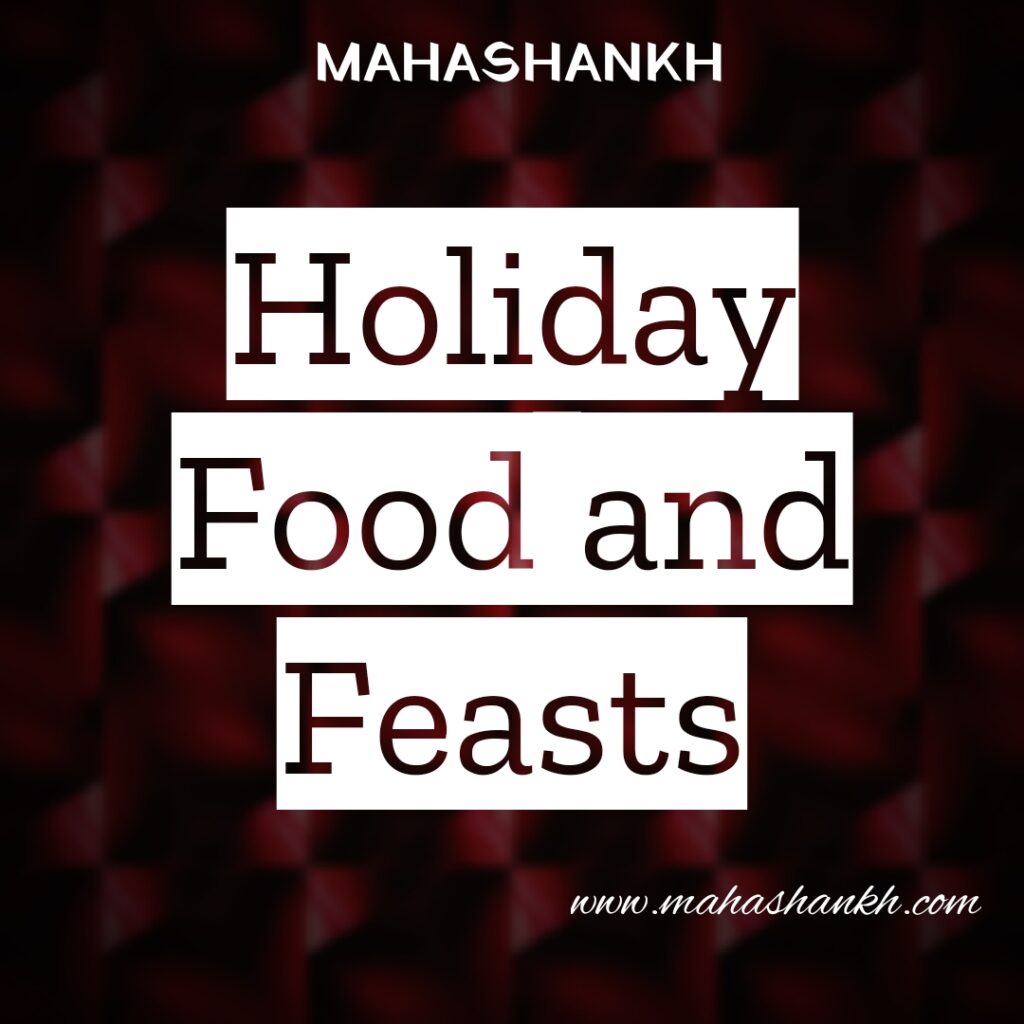
One of the most anticipated aspects of the Christmas season is the rich tapestry of flavors and aromas that accompany festive feasts. From traditional Christmas meals that bring families together to the irresistible allure of festive treats and the comforting warmth of special holiday beverages, the culinary aspect of Christmas is a celebration in itself. In this exploration, we journey through the delectable world of holiday foods, uncovering the essence of traditional Christmas meals, indulging in festive treats and sweets, and savoring the unique charm of special holiday beverages.
Traditional Christmas Meals:
- Roast Turkey or Ham:
- In many Western countries, a centerpiece of the Christmas feast is a succulent roast turkey or ham. Accompanied by savory stuffing, cranberry sauce, and rich gravy, the roasted main dish symbolizes abundance and togetherness.
- Christmas Goose or Duck:
- European traditions often feature roasted goose or duck as the main course. These flavorful and richly textured meats are enjoyed alongside a variety of sides, including roasted vegetables, potatoes, and spiced fruit compotes.
- Fish and Seafood:
- In some cultures, particularly in Southern Europe, fish and seafood take center stage for Christmas Eve dinners. Dishes like Italian Feast of the Seven Fishes or Spanish bacalao showcase the variety and abundance of marine delights.
Festive Treats and Sweets:
- Gingerbread and Cookies:
- The holiday season wouldn’t be complete without the delightful aroma of gingerbread cookies. Families often come together to bake and decorate these spiced treats, creating cherished moments and delicious masterpieces.
- Fruitcake and Stollen:
- Fruitcake, with its candied fruits and nuts, is a classic Christmas dessert enjoyed in many countries. Similarly, the German stollen, a sweet bread filled with dried fruits and marzipan, is a festive favorite during the holiday season.
- Yule Log (Bûche de Noël):
- The Yule Log, or Bûche de Noël, is a French-inspired dessert shaped like a log, traditionally made of sponge cake and buttercream. This iconic treat is both visually striking and scrumptiously satisfying.
Special Holiday Beverages:
- Eggnog:
- A creamy and indulgent concoction, eggnog is a beloved holiday beverage often spiked with a touch of rum or bourbon. Its rich, spiced flavor embodies the warmth and conviviality of the season.
- Mulled Wine and Cider:
- Mulled wine, heated with aromatic spices like cinnamon and cloves, is a popular winter beverage in many European countries. Similarly, spiced apple cider, served warm, evokes the cozy comforts of the holiday season.
- Hot Chocolate and Peppermint Mocha:
- Hot chocolate, adorned with whipped cream and sprinkles, is a perennial favorite during winter months. The addition of peppermint transforms it into a seasonal delight, as seen in the popular peppermint mocha.
Christmas in Art and Literature: A Timeless Canvas of Festive Imagination
The enchanting spirit of Christmas has inspired artists and writers throughout the ages, creating a rich tapestry of visual and literary works that capture the magic, wonder, and warmth of the holiday season. In this exploration, we delve into the diverse expressions of Christmas in art, the timeless narratives in literature and poetry, and the captivating world of holiday films and television specials that continue to resonate with audiences around the world.
Depictions of Christmas in Art:
- Nativity Scenes:
- Nativity scenes have been a recurrent theme in art for centuries, with artists portraying the holy moment of Jesus’ birth. From the exquisite renditions of the Italian Renaissance masters to the folk-inspired nativity scenes of various cultures, these artworks serve as visual narratives that communicate the spiritual essence of Christmas.
- Winter Landscapes and Festive Scenes:
- Paintings depicting winter landscapes adorned with festive decorations, snowy streets, and bustling holiday activities are a common motif in Christmas art. These works evoke a sense of nostalgia and capture the picturesque charm of the season.
- Illustrations for Christmas Stories:
- Many classic Christmas stories have been accompanied by illustrations that have become iconic in their own right. The illustrations for “A Christmas Carol” by Charles Dickens, for instance, have played a significant role in shaping the visual imagery associated with the timeless tale.
Christmas in Literature and Poetry:
- “A Christmas Carol” by Charles Dickens:
- Charles Dickens’ “A Christmas Carol” is perhaps the most celebrated Christmas story in literature. The novella, first published in 1843, tells the transformative tale of Ebenezer Scrooge and has become synonymous with themes of redemption, generosity, and the true spirit of Christmas.
- “The Gift of the Magi” by O. Henry:
- O. Henry’s short story “The Gift of the Magi” is a poignant exploration of selfless love and sacrifice during the Christmas season. The tale, first published in 1905, has resonated with readers for its timeless message of the importance of giving from the heart.
- Christmas Poetry:
- Poets have crafted verses that capture the emotions and sentiments associated with Christmas. From the classic poetry of Clement Clarke Moore’s “A Visit from St. Nicholas” (commonly known as “The Night Before Christmas”) to modern works exploring the deeper meanings of the season, Christmas poetry reflects the diversity of human experiences during this festive time.
Holiday Films and Television Specials:
- “It’s a Wonderful Life” (1946):
- Frank Capra’s “It’s a Wonderful Life” has become a beloved Christmas classic. The film, starring James Stewart, explores themes of redemption and the impact one individual can have on the lives of others.
- “A Charlie Brown Christmas” (1965):
- The animated television special “A Charlie Brown Christmas” has been a cherished part of holiday programming for decades. Created by Charles M. Schulz, it beautifully conveys the true meaning of Christmas through the Peanuts gang.
- “Home Alone” (1990):
- “Home Alone,” directed by Chris Columbus, has become a modern Christmas classic known for its humor, heart, and festive setting. The film follows the misadventures of young Kevin McCallister during the Christmas season.
Commercialization of Christmas: Tracing the Journey from Tradition to Consumerism

The story of Christmas has undergone a transformative evolution, shifting from a sacred and cultural celebration to a commercial phenomenon that permeates every aspect of modern society. In this exploration, we dissect the commercialization of Christmas, examining the evolution of Christmas advertising, the profound economic impact of the holiday season, and the ever-changing landscape of consumerism and shopping trends.
Evolution of Christmas Advertising:
- Early Print Advertisements:
- The 19th century saw the emergence of Christmas advertisements in newspapers and magazines. Initially focused on promoting seasonal goods and gift ideas, these early ads laid the groundwork for the commercialization of Christmas.
- Department Store Christmas Displays:
- Pioneering department stores, such as Macy’s in New York, embraced elaborate Christmas displays to attract shoppers. These displays, often featuring festive themes and window decorations, became an integral part of the holiday shopping experience.
- Radio and Television Advertisements:
- The mid-20th century witnessed the rise of radio and television as powerful mediums for Christmas advertising. Brands started producing memorable jingles and commercials to capture the attention of a growing consumer audience during the holiday season.
Economic Impact of Christmas:
- Retail Sales and Seasonal Employment:
- Christmas has become a crucial period for retailers, with a significant portion of annual sales occurring during the holiday season. The demand for goods and services results in increased seasonal employment as businesses gear up for the influx of shoppers.
- Global Economic Boost:
- The economic impact of Christmas extends beyond individual countries, contributing to a global boost in trade and commerce. The exchange of gifts, decorations, and festive foods on an international scale further amplifies the holiday’s economic significance.
Consumerism and Shopping Trends:
- Black Friday and Cyber Monday:
- The post-Thanksgiving shopping frenzy, marked by Black Friday and Cyber Monday, has become synonymous with Christmas consumerism. Retailers offer enticing discounts, prompting millions to participate in the pursuit of holiday bargains both in-store and online.
- E-Commerce and Online Shopping:
- The advent of e-commerce has revolutionized Christmas shopping, allowing consumers to browse and purchase gifts from the comfort of their homes. Online retailers and marketplaces experience a surge in activity during the holiday season.
- Gift-Giving Expectations:
- The commercialization of Christmas has elevated gift-giving to an almost obligatory tradition. Consumers often feel societal pressure to exchange gifts, contributing to the consumerist culture that surrounds the holiday.
Christmas Around the Year: A Cyclical Celebration of Preparation, Joy, and New Beginnings
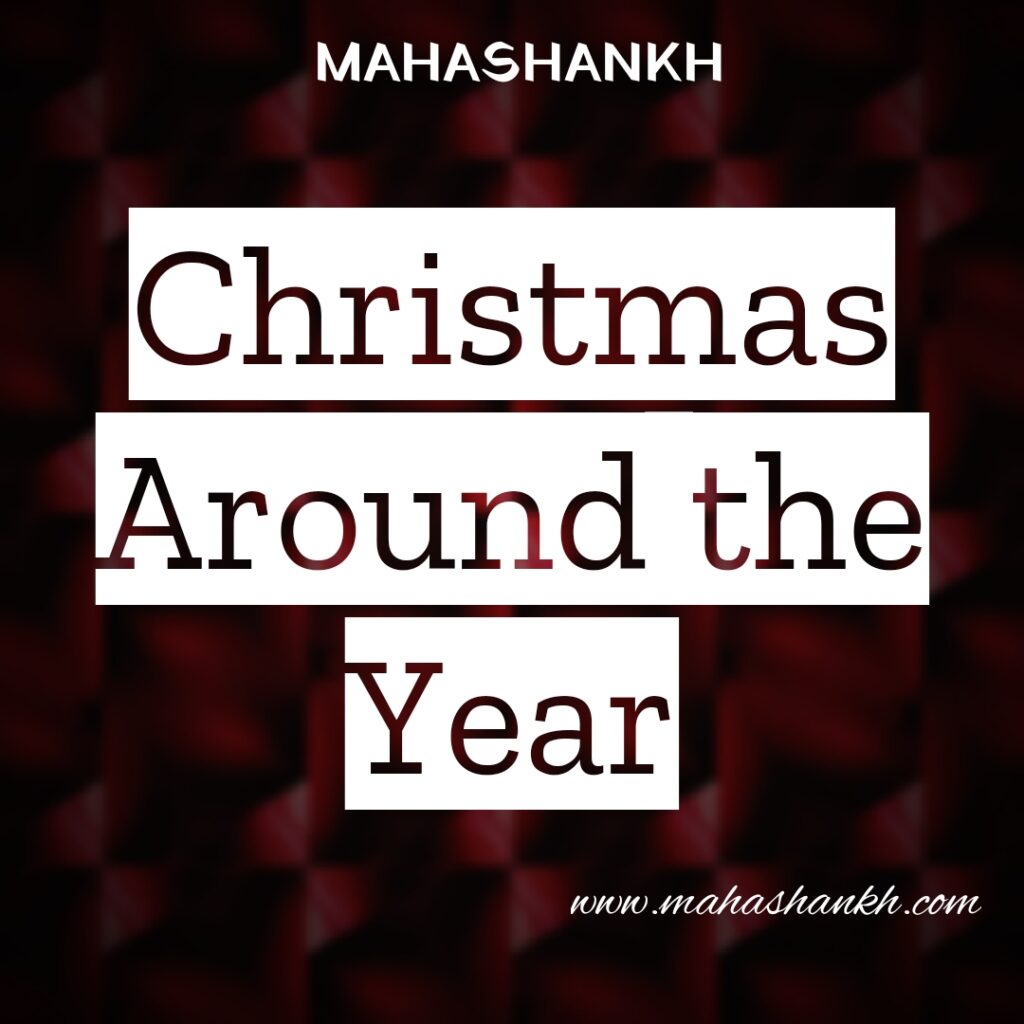
Christmas is not merely a one-day event but a cyclical celebration that spans the entire year, embracing preparations, the festive climax, and the transition into the New Year. In this exploration, we navigate through the various phases of Christmas around the year, from the meticulous preparations and planning to the post-Christmas celebrations, culminating in the spirited transition into the New Year.
Preparations and Planning:
- Year-Round Anticipation:
- The anticipation of Christmas begins long before the holiday season officially commences. Throughout the year, individuals and families look forward to the joyous festivities, marking calendars and making mental notes of cherished traditions.
- Strategic Gift Planning:
- Gift-giving, a central aspect of Christmas, involves year-round planning for many. From keeping an eye out for sales and discounts to crafting handmade presents, the preparation for exchanging gifts is a thoughtful and often strategic process.
- Home Decor and Festive Touches:
- Decorating homes for Christmas is not a last-minute affair. Many enthusiasts start planning their festive decor well in advance, considering themes, color schemes, and acquiring or creating ornaments and other decorative elements.
- Menu Planning and Culinary Delights:
- Planning the Christmas feast involves careful consideration of menus, recipes, and ingredient lists. Some even embark on baking and freezing treats ahead of time, ensuring a delicious spread during the festive season.
Post-Christmas Celebrations:
- Extended Festivities:
- While Christmas Day is the pinnacle of celebrations, the festive spirit often extends beyond December 25th. Many cultures celebrate the Twelve Days of Christmas, leading up to Epiphany on January 6th, allowing for a continued revelry.
- Gift Exchanges and Gatherings:
- Post-Christmas is a time for exchanging late gifts and spending quality time with loved ones. Extended family gatherings and festive parties often take place in the days following Christmas, creating an atmosphere of warmth and togetherness.
- Reflection and Gratitude:
- Post-Christmas celebrations provide an opportunity for reflection and gratitude. Individuals may take stock of the holiday season, expressing thanks for the moments shared, the generosity experienced, and the joy that permeated their lives.
New Year’s Eve and Transition into the New Year:
- Countdown to the New Year:
- As the year draws to a close, attention shifts to New Year’s Eve. Festivities include countdowns, fireworks, and gatherings to bid farewell to the old year and welcome the new one with hope and optimism.
- New Year’s Resolutions:
- The transition into the New Year often involves the creation of resolutions and goals. Individuals reflect on personal growth, areas for improvement, and aspirations for the coming year, setting the tone for positive change.
- Symbolic Traditions:
- Various cultures have symbolic traditions associated with New Year’s Eve and New Year’s Day. From midnight toasts and the singing of “Auld Lang Syne” to specific foods believed to bring good luck, these traditions vary globally.
Charitable and Community Activities: Nurturing the Spirit of Giving and Volunteerism During the Holidays
Amidst the festive glow of Christmas, a profound spirit of generosity and community engagement takes center stage. Charitable activities and volunteerism during the holidays exemplify the true essence of the season, bringing people together to make a positive impact on their communities. In this exploration, we delve into the heartwarming world of charitable and community activities, exploring the spirit of giving, the selfless commitment to volunteerism, and the diverse range of charity events and initiatives that define the holiday season.
Spirit of Giving:
- Generosity and Compassion:
- Christmas is a time when the spirit of giving flourishes, and individuals embrace the joy of sharing with those in need. From small acts of kindness to substantial charitable contributions, the spirit of giving permeates communities with warmth and compassion.
- Philanthropic Traditions:
- Many families and communities establish philanthropic traditions during the holiday season. This may include adopting families in need, participating in giving trees, or organizing toy drives to ensure that everyone can experience the joy of Christmas.
Volunteerism during the Holidays:
- Community Engagement:
- Volunteering becomes a cornerstone of the holiday season, with individuals and groups actively engaging in community service. Whether serving meals at local shelters, participating in outreach programs, or assisting with holiday events, volunteers play a crucial role in fostering a sense of togetherness.
- Corporate and Workplace Initiatives:
- Many companies and workplaces encourage employees to participate in volunteer activities during the holidays. Corporate initiatives may include organizing team volunteer outings, contributing to charitable causes, or supporting local nonprofits through company-sponsored events.
Charity Events and Initiatives:
- Food Drives and Pantry Support:
- Food insecurity is a pressing concern for many during the holiday season. Food drives, community kitchens, and support for local pantries are common charity initiatives aimed at ensuring that everyone has access to a festive meal.
- Toy and Gift Drives:
- Gift-giving is a cherished tradition during Christmas, and charity initiatives often focus on providing toys and gifts to children in need. Toy drives and donation campaigns bring joy to families facing economic challenges.
Christmas Controversies and Criticisms: Navigating Cultural Sensitivity, Environmental Concerns, and Commercialization Critiques
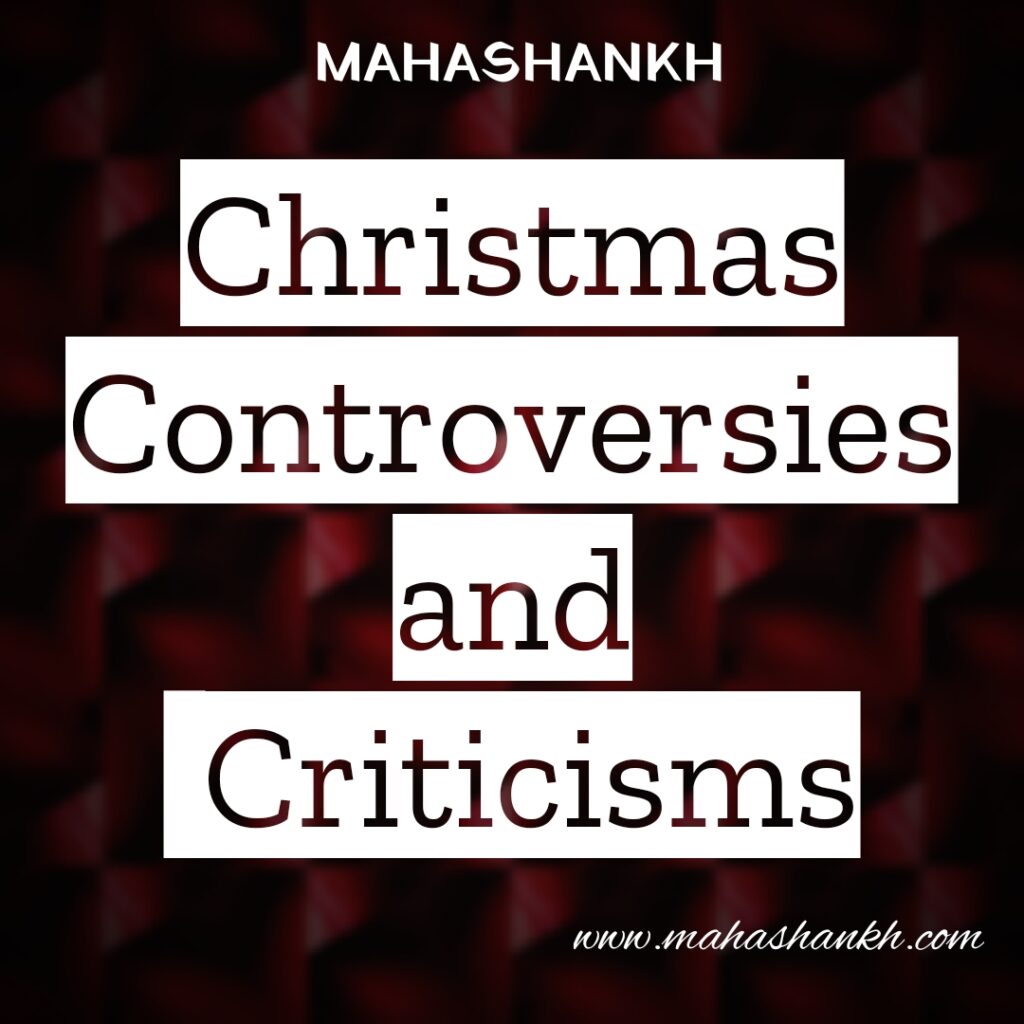
While Christmas is a time of joy and celebration for many, it is not immune to controversies and criticisms that arise from various perspectives. This exploration delves into three significant areas of concern during the holiday season: cultural sensitivity and inclusivity, the environmental impact of celebrations, and critiques surrounding the commercialization of Christmas.
Cultural Sensitivity and Inclusivity:
- Religious and Cultural Sensitivity:
- Christmas is rooted in Christian traditions, but its celebration has become widespread, embracing various cultural and religious contexts. Critics argue that the holiday’s omnipresence may unintentionally marginalize those who do not celebrate Christmas or belong to different faiths. Emphasizing inclusivity and understanding diverse perspectives is essential to fostering harmony during the season.
- Santa Claus Controversies:
- The iconic figure of Santa Claus, while beloved by many, has faced controversies regarding his portrayal. Debates around the racial representation of Santa and the emphasis on a single cultural narrative often prompt discussions on how to make Christmas symbols more inclusive and reflective of the diverse global community.
Environmental Impact of Celebrations:
- Excessive Consumerism and Waste:
- The festive season often witnesses a surge in consumerism, leading to increased production, consumption, and waste. Critics express concerns about the environmental impact of extravagant gift-giving, excessive packaging, and the disposal of decorations, contributing to issues such as pollution and landfill overflow.
- Christmas Tree Debates:
- The use of natural Christmas trees raises ecological concerns, as some argue that the mass cultivation and disposal of trees contribute to deforestation and environmental degradation. Alternatives, such as artificial trees or sustainable tree farming practices, are proposed to mitigate the environmental impact.
Commercialization Critiques:
- Materialism and Overemphasis on Gifts:
- Christmas has been criticized for its association with materialism, with an excessive focus on gift-giving overshadowing the deeper meanings of the season. Critics argue that the pressure to buy gifts can lead to financial strain and detract from the values of love, compassion, and togetherness.
- Early Marketing and Sales Tactics:
- The commercialization of Christmas often begins well before the holiday season, with early marketing and sales tactics drawing criticism. Some argue that the prolonged advertising campaigns and push for early shopping contribute to a sense of consumer urgency, detracting from the more reflective and spiritual aspects of the season.
Conclusion:
As Christmas continues to be a multifaceted celebration, it is essential to acknowledge and address the controversies and criticisms associated with the season. From fostering cultural sensitivity and inclusivity to addressing environmental concerns and mitigating the impact of commercialization, open dialogues and thoughtful considerations can contribute to a more balanced and meaningful observance of Christmas for individuals and communities worldwide.
- Fundraising Campaigns:
- The holiday season sees a surge in fundraising campaigns for various causes, from supporting medical research to addressing homelessness. Crowdfunding, charity runs, and other events mobilize communities to contribute to meaningful causes.
Top 50 FAQs About Christmas 100% factual based on extensive research, updated as of December 2023.
1. When is Christmas celebrated?
Christmas is celebrated on December 25th every year. It commemorates the birth of Jesus Christ, who is believed by Christians to be the Son of God.
2. What is the history of Christmas?
The origins of Christmas can be traced back to ancient Rome, where pagans celebrated a festival called Saturnalia in honor of the god Saturn. This festival was held from December 17th to December 23rd and included feasting, drinking, and merrymaking.
In the 4th century AD, the Roman emperor Constantine converted to Christianity. He began to promote the Christian faith and tried to replace pagan festivals with Christian holidays. As a result, Saturnalia was gradually replaced by Christmas.
3. Why is Christmas associated with Santa Claus?
Santa Claus is a legendary figure who is said to bring gifts to children on Christmas Eve. He is based on the Dutch figure of Sinterklaas, who was originally a bishop who lived in the 4th century AD.
The modern image of Santa Claus was popularized in the 19th century by American writer Clement Clarke Moore, who wrote the poem “A Visit from St. Nicholas” (also known as “The Night Before Christmas”).
4. What are some of the most popular Christmas traditions?
Some of the most popular Christmas traditions include:
- Decorating a Christmas tree
- Exchanging gifts
- Attending church services
- Singing Christmas carols
- Eating a special Christmas meal
5. What are some of the most popular Christmas foods?
Some of the most popular Christmas foods include:
- Roasted turkey
- Ham
- Mashed potatoes
- Stuffing
- Cranberry sauce
- Pumpkin pie
- Eggnog
6. What are some of the most popular Christmas gifts?
The most popular Christmas gifts vary from year to year, but some of the most popular gifts in recent years have included:
- Toys
- Electronics
- Clothing
- Gift cards
- Experiences
7. What are some of the most popular Christmas movies?
There are many classic Christmas movies that are enjoyed by people of all ages. Some of the most popular Christmas movies include:
- Home Alone
- The Grinch
- It’s a Wonderful Life
- A Christmas Story
- Elf
8. What are some ways to make Christmas special?
There are many ways to make Christmas special. Here are a few ideas:
- Spend time with loved ones
- Give to others
- Volunteer your time
- Make homemade gifts
- Start new traditions
- Enjoy the simple things
9. How is Christmas celebrated around the world?
Christmas is celebrated around the world, but there are many different ways that people celebrate this special holiday. In some countries, Christmas is a religious holiday, while in others it is a more secular holiday. However, no matter how it is celebrated, Christmas is always a time for joy and happiness.
10. What are some of the most interesting facts about Christmas?
- The world’s largest Christmas tree is located in Gubbio, Italy. It is made up of over 7,000 lights and can be seen from miles away.
- The first artificial Christmas tree was created in Germany in 1830.
- The tradition of putting ornaments on a Christmas tree dates back to the 16th century.
- The song “Jingle Bells” was originally written for Thanksgiving.
- The first state to declare Christmas an official holiday was Alabama in 1836.
11. What are some of the most popular Christmas carols?
- Silent Night
- Jingle Bells
- Joy to the World
- The First Noel
- Hark! The Herald Angels Sing
12. What are some of the most famous Christmas stories?
- A Christmas Carol by Charles Dickens
- The Polar Express by Chris Van Allsburg
- How the Grinch Stole Christmas! by Dr. Seuss
- ‘Twas the Night Before Christmas by Clement Clarke Moore
- The Nutcracker by E.T.A. Hoffmann
13. What are some of the most popular Christmas symbols?
- The Christmas tree
- Santa Claus
- The Star of Bethlehem
- The nativity scene
- The candy cane
Top 50 FAQs About Christmas (Part 2)
14. What are some of the most popular Christmas activities?
- Attending Christmas parades
- Visiting Christmas markets
- Decorating a gingerbread house
- Going ice skating
- Watching Christmas movies
- Singing Christmas carols
15. What are some of the most popular Christmas gift-giving traditions?
- Secret Santa
- White elephant gift exchange
- Stocking stuffers
- Giving to charity in lieu of gifts
16. What are some of the most popular Christmas Eve traditions?
- Leaving out milk and cookies for Santa Claus
- Reading “The Night Before Christmas”
- Going to church services
- Leaving out carrots for Rudolph the Red-Nosed Reindeer
17. What are some of the most popular Christmas Day traditions?
- Opening presents
- Eating a special Christmas meal
- Watching Christmas movies
- Playing Christmas games
18. What are some of the most popular New Year’s Eve traditions?
- Making resolutions
- Counting down to midnight
- Watching fireworks displays
- Kissing at midnight
19. What are some of the most popular New Year’s Day traditions?
- Eating black-eyed peas for good luck
- Watching parades
- Making New Year’s resolutions
- Going to church services
20. What are some of the most popular Christmas songs for children?
- Frosty the Snowman
- Rudolph the Red-Nosed Reindeer
- The Twelve Days of Christmas
- Jingle Bells
- We Wish You a Merry Christmas
21. What are some of the most popular Christmas movies for children?
- Elf
- The Polar Express
- Home Alone
- A Christmas Story
- Miracle on 34th Street
22. What are some of the most popular Christmas books for children?
- The Snowy Day by Ezra Jack Keats
- The Polar Express by Chris Van Allsburg
- ‘Twas the Night Before Christmas by Clement Clarke Moore
- How the Grinch Stole Christmas! by Dr. Seuss
- The Nutcracker by E.T.A. Hoffmann
23. What are some of the most popular Christmas crafts for children?
- Making paper snowflakes
- Decorating Christmas cookies
- Making ornaments
- Wrapping presents
- Creating holiday cards
24. What are some of the most popular Christmas games for children?
- Pin the tail on the donkey
- Christmas charades
- Christmas carol karaoke
- Secret Santa
- White elephant gift exchange
25. What are some of the most popular Christmas gifts for children?
- Toys
- Books
- Clothes
- Games
- Electronics
26. What are some of the most popular Christmas party themes?
- Ugly Christmas sweater party
- Winter wonderland party
- Elf-themed party
- Polar Express party
- Gingerbread house-making party
27. What are some of the most popular Christmas party decorations?
- Christmas lights
- Christmas trees
- Christmas ornaments
- Christmas stockings
- Christmas tablecloth
28. What are some of the most popular Christmas party foods?
- Finger sandwiches
- Cheese and crackers
- Deviled eggs
- Spinach artichoke dip
- Holiday punch
29. What are some of the most popular Christmas party drinks?
- Eggnog
- Hot chocolate
- Spiced cider
- Prosecco
- Wine
30. What are some of the most popular Christmas party activities?
- Music and dancing
- Games
- Photo booth
- Ugly Christmas sweater contest
- Christmas caroling
31. What are some of the most popular Christmas travel destinations?
- New York City
- Paris
- London
- Berlin
- Prague
32. What are some of the most popular Christmas gift experiences?
- Spa day
- Cooking class
- Wine tasting
- Concert tickets
- Weekend getaway
33. What are some of the most popular Christmas charity organizations?
- Salvation Army
- Toys for Tots
- Make-A-Wish Foundation
- World Wildlife Fund
- American Red Cross
34. What are some of the most popular ways to volunteer during Christmas?
- Serving meals at a soup kitchen
- Wrapping gifts for charity
- Helping out at a homeless shelter
- Donating blood
- Volunteering at an animal shelter
Sure, here are some more FAQs about Christmas:
Top 50 FAQs About Christmas (Part 3)
35. What are some of the most popular ways to save money on Christmas gifts?
- Making homemade gifts
- Shopping at discount stores
- Taking advantage of sales and coupons
- Buying gifts in bulk
- Asking for donations instead of gifts
36. What are some of the most popular ways to reduce stress during Christmas?
- Setting realistic expectations
- Delegating tasks
- Saying no to additional commitments
- Taking breaks throughout the day
- Practicing relaxation techniques
37. What are some ideas for eco-friendly Christmas gifts?
- Reusable water bottles
- Bamboo utensils
- Organic coffee or tea
- Solar-powered chargers
- Experiences instead of material goods
38. What are some ways to make Christmas more meaningful?
- Focusing on spending time with loved ones
- Giving back to the community
- Practicing gratitude
- Reflecting on the true meaning of Christmas
39. What are some tips for traveling during Christmas?
- Book your flights and accommodations early
- Pack light and be prepared for weather changes
- Allow extra time for security checks and delays
- Be patient and understanding with travel staff
- Enjoy the journey!
40. What are some safety tips for Christmas?
- Use caution when decorating your home and yard
- Keep fire hazards away from heat sources
- Never leave candles unattended
- Be aware of your surroundings when walking or driving
- Lock your doors and windows when you are away from home
41. What are some tips for dealing with difficult family members during Christmas?
- Set boundaries and stick to them
- Avoid sensitive topics
- Focus on positive interactions
- Take breaks if you need to
- Remember that the holidays are a time for peace and love
42. What are some coping mechanisms for dealing with grief during Christmas?
- Acknowledge your feelings and allow yourself to grieve
- Spend time with loved ones who understand what you’re going through
- Seek professional help if you need it
- Take care of yourself physically and emotionally
- Create new traditions that honor your loved one
43. What are some tips for planning a Christmas party?
- Set a budget and stick to it
- Choose a date and time that works for most people
- Send out invitations early
- Plan the menu and make arrangements for food and drinks
- Decorate your home or venue
- Plan activities and entertainment
- Send thank you notes after the party
44. What are some tips for hosting out-of-town guests during Christmas?
- Communicate with your guests well in advance
- Prepare your home for visitors
- Provide amenities such as towels, linens, and toiletries
- Plan activities and outings
- Be flexible and understanding with your guests’ needs
45. What are some ways to make Christmas more inclusive for people with disabilities?
- Be aware of and respect individual needs
- Provide accommodations such as ramps, accessible restrooms, and assistive listening devices
- Use sign language interpreters if necessary
- Be patient and understanding
- Make everyone feel welcome and included
46. What are some ways to celebrate Christmas with people who are alone or separated from loved ones?
- Volunteer at a local soup kitchen or homeless shelter
- Visit a nursing home or hospital
- Reach out to a friend or family member who is alone
- Make a donation to a charity that helps people in need
47. What is the difference between Christmas and Yule?
Christmas and Yule are both holidays that celebrate the winter solstice, which is the shortest day of the year. However, they have different origins and traditions.
Christmas is a Christian holiday that celebrates the birth of Jesus Christ. It is typically celebrated on December 25th. Christians believe that Jesus is the Son of God and that he was born to save humanity.
Yule is a pagan holiday that has been celebrated for centuries. It is typically celebrated from December 21st to December 24th. Pagans believe in many gods and goddesses, and Yule is a time to honor them and celebrate the changing seasons.
48. What are some of the different ways that Christmas is celebrated around the world?
- In the United States, Christmas is typically celebrated with a large feast, the exchange of gifts, and the decoration of Christmas trees.
- In the United Kingdom, Christmas is also a time for family and friends, but there are some unique traditions as well. For example, it is traditional to eat mince pies and Christmas pudding, and to watch the Queen’s Christmas speech.
- In Germany, Christmas is a time for markets, carols, and gingerbread houses. There is also a tradition of leaving treats for Santa Claus, who is known as Nikolaus in Germany.
- In France, Christmas is celebrated with a large feast, called le réveillon de Noël. It is also traditional to attend midnight mass on Christmas Eve.
- In Japan, Christmas is not a traditional holiday, but it is becoming increasingly popular. It is typically celebrated with a KFC dinner and the exchange of gifts.
49. What are some of the most popular Christmas myths and legends?
- Santa Claus: Santa Claus is a legendary figure who is said to bring gifts to children on Christmas Eve. He is based on the Dutch figure of Sinterklaas, who was originally a bishop who lived in the 4th century AD.
- The Grinch: The Grinch is a fictional character who hates Christmas. He is said to have stolen all the presents from Whoville, but he eventually changes his mind and returns the presents.
- The Polar Express: The Polar Express is a fictional train that takes children to the North Pole to meet Santa Claus. It is based on the children’s book of the same name by Chris Van Allsburg.
- Rudolph the Red-Nosed Reindeer: Rudolph the Red-Nosed Reindeer is a fictional reindeer who was bullied for his red nose. He was eventually accepted by Santa Claus and became his lead reindeer.
- Elf: Elf is a fictional character who is one of Santa Claus’s helpers. He is known for his small size and his love of Christmas.
50. What are some of the most popular Christmas movies of all time?
- It’s a Wonderful Life: It’s a Wonderful Life is a classic Christmas movie about a man named George Bailey who is considering taking his own life. An angel shows him what the world would be like if he had never been born, and he is convinced to live.
- A Christmas Carol: A Christmas Carol is a classic Christmas movie about a miserly man named Ebenezer Scrooge who is visited by three ghosts who teach him the true meaning of Christmas.
- Miracle on 34th Street: Miracle on 34th Street is a classic Christmas movie about a man who claims to be Santa Claus. He is put on trial to prove his identity, and he eventually wins the hearts of everyone in New York City.
- Home Alone: Home Alone is a classic Christmas movie about a boy who is accidentally left home alone by his family when they go on vacation. He must defend his home from burglars, and he eventually learns the importance of family.
- The Polar Express: The Polar Express is a newer Christmas movie based on the children’s book of the same name. It is about a boy who takes a magical train ride to the North Pole to meet Santa Claus.
51. What are some of the most popular Christmas songs of all time?
- Silent Night: Silent Night is a classic Christmas carol that was written in 1818. It is one of the most popular Christmas songs in the world.
- Jingle Bells: Jingle Bells is a popular Christmas song that was written in 1857. It is one of the most recognizable Christmas songs in the world.
- Joy to the World: Joy to the World is a classic Christmas carol that was written in the 1700s. It is a powerful song that celebrates the birth of Jesus Christ.
- The First Noel: The First Noel is a classic Christmas carol that was written in the










